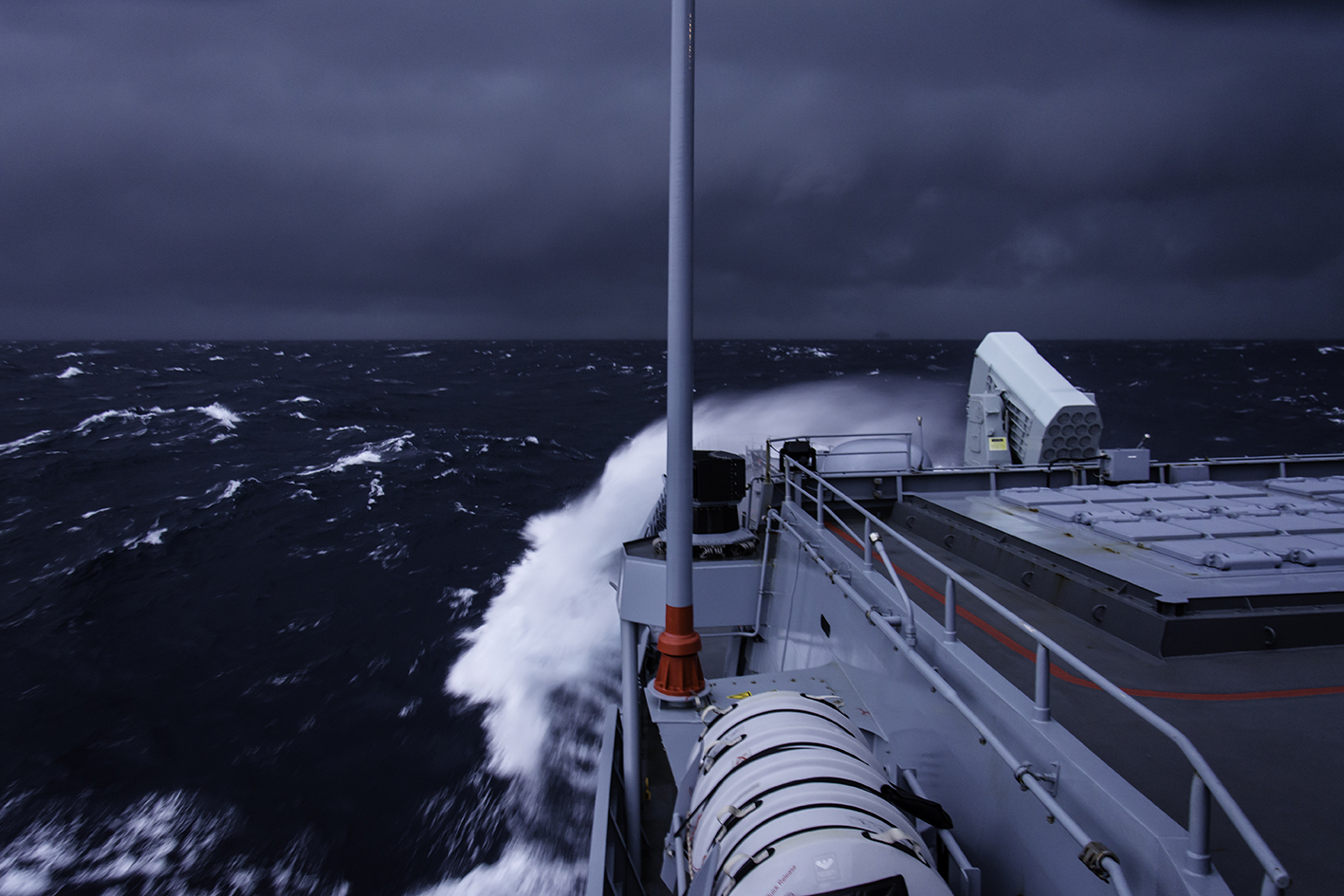Retreating sea ice has allowed increased shipping in the harsh conditions of the Barents Sea and the Arctic Ocean. On-board safety is mainly affected by sea spray freezing on contact with the ship deck. Funded by the NWO Polar Programme, researchers from TU Delft are studying the very basics of sea spray formation.
Artic shipping conditions. (Photo: German Navy Photographer Alyssa Bier)
“You hear the resounding blast of the wave breaking against the vertical wall,” says Dr Bas Hofland, Assistant Professor of coastal structures at the Faculty of Civil Engineering and Geosciences. “Then a few seconds of silence, followed by a loud showering noise of falling droplets.” While still at Deltares, he used the large wave flume to study the impact forces of breaking waves. But it was the spray reaching heights of 30 metres that caught his attention. Nobody else appeared to be interested in their formation except for Albert Aalbers from the Maritime Research Institute of the Netherlands (MARIN), a partnering institute in this research.
Full-scale experiments
Under certain conditions, a spray jet will first break down into vertical ligaments before further disintegrating into droplets (see movie at 9 seconds). The physics of this process is not well understood. The researchers want to perform small-scale experiments at the civil engineering water research laboratory, measuring the spectrum of droplet sizes and heights as a function of wave characteristics. MARIN will perform large-scale tests in its wave basin and carry out field measurements on a ship. The project by Wim Uijttewaal, Bas Hofland and Jeroen Hoving will apply existing fluid dynamics models to explain these results at a fundamental level.
Next steps
Once formed, the wind can carry the droplets onto the deck of a ship, where they freeze. But it can also carry them over a dike where spray water can cause damage or hindrance. Modelling in-air spray transport and subsequent processes is, however, not part of the current project. “Our research can improve the input of existing icing or overtopping models,” says Bas Hofland, “but first we need to extend the physics of waves beyond the moment of wave impact.”


The project has now officially started, and the fluid dynamics section is looking for a PhD student with a civil engineering or physics background. Candidates can contact Bas Hofland at B.Hofland@tudelft.nl
Martijn Engelsman, freelance science journalist



Comments are closed.